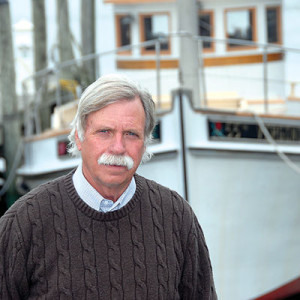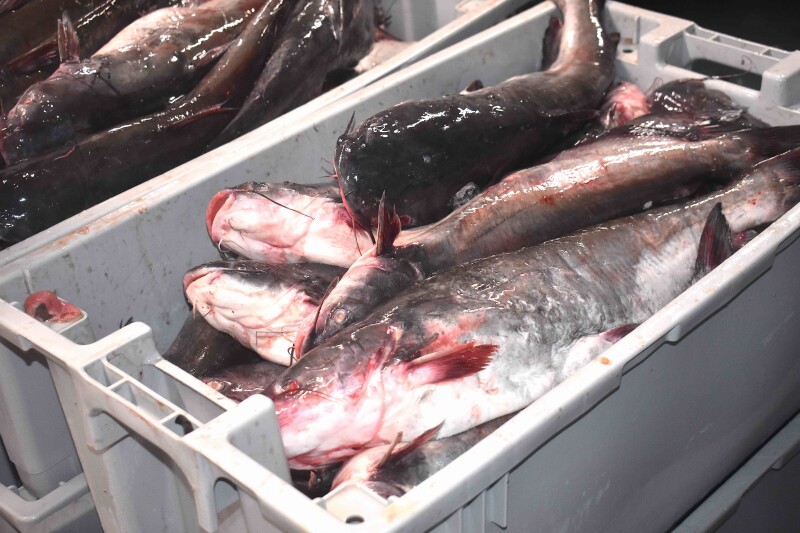The Virginia Department of Agriculture and Customer Services (VDACS) - International Marketing Division sponsored a seafood promotional event bringing in international chefs, food critics and writers to visit a blue catfish processing plant on Aug. 30 in Hampton, Va.
The group toured the processing plant of L. D. Amory Company Inc. one of only three blue catfish processing plants in the state. Meade Amory of Armory Seafood explained to the group that during the 1970s and ‘80s blue catfish were introduced to the James, Rappahannock and York river basins as a new recreational fish by the Virginia Department of Wildlife Resources. Blue cats are native to Mississippi, Ohio and Missouri rivers.
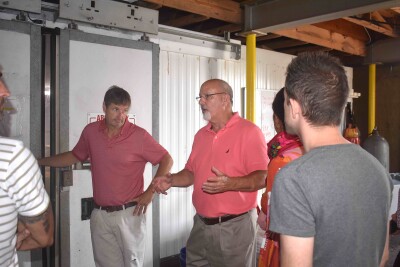
The catfish quickly spread throughout the Chesapeake Bay watershed into nearly every major tributary and are now being seen in North Carolina waters too, says Amory.
“They were introduced near the fall line for recreational fishing because they are supposedly a freshwater fish but they have quickly adapted to the bay’s brackish and saltwater,” says Amory. “They are now catching blue catfish in the middle of the bay.”
Blue catfish eat shad, herring, striped bass, menhaden, clams and blue crabs. There is now concern that the large catfish population are having a detrimental impact on the populations of these species.
“All of these species are important to the ecosystem and to commercial and recreational fishermen,” says Amory.
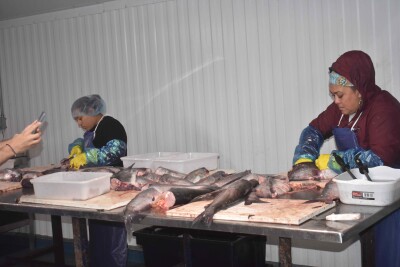
He says blue catfish are a “really good product” to serve in restaurants and noted that several restaurants in Hampton and throughout the state have it on its menu.
For lunch the group, that came from as far away as France and Mexico, ate fried catfish along with scallops and crab cakes, all seafood caught in state waters.
The meal was served at Graham & Rollins Seafood Market and Restaurant in Hampton. Owner of the restaurant, Amy Graham says that they serve catfish regularly on the menu.
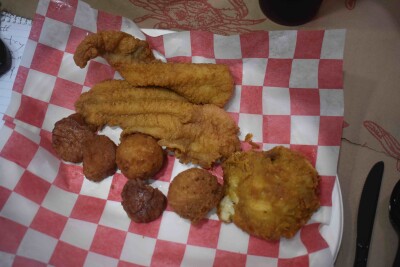
“There are some people who just do not want to eat catfish but when they taste it they change their minds,” she said. “It really is a good tasting fish.”
The group that was composed of about a dozen people all agreed that the taste of catfish was something they could take back and market in their restaurants.
Blue catfish funding
On Sept. 6, the Virginia General Assembly voted down a proposal to invest $2 million in a grant program to establish the Catfish Industries Development Program, but instead voted to start off the program with $250,000 in state seed monies. Before it becomes law, however, Virginia Governor George Youngkin has to sign off on the budget, which he is expected to do.
The program authorizes the Governor to award grants from the Governor's Agriculture and Forestry Industries Development Fund to establish a blue catfish industry in the state.
Grants shall be awarded as reimbursable grants to support blue catfish processing, flash freezing, harvesting of the fish and infrastructure projects. The bill directs the Secretary of Agriculture and Forestry to develop certain guidelines as provided in the bill on behalf of the Governor to facilitate the program.
The blue catfish legislation and funding proposals were sponsored by state Sen. Richard Stuart, R-King George County, and Delegate Keith Hodges, R-Middlesex County.
On his way home from Richmond and the General Assembly budget session on Sept. 6, Hodges said that he was disappointed in the drastic funding cut of the program. but is optimistic that he will be able to obtain more funding during later budget sessions.
“These blue catfish are decimating the menhaden, striped bass and crab populations on the bay,” says Hodges. “They are annually eating a million tons of peanut bunkers (young menhaden). We have got to find some way to bring them under control and by encouraging a strong commercial fishery to harvest the fish and creating adequate processing facilities – is the answer.”
“The $250,000 is a start and hopefully we can get some long-term funding later on to make this fishery grow,” he says. “We have a lot of bipartisan support (in the General Assembly) and I’ve heard that Maryland is considering a similar program too."




